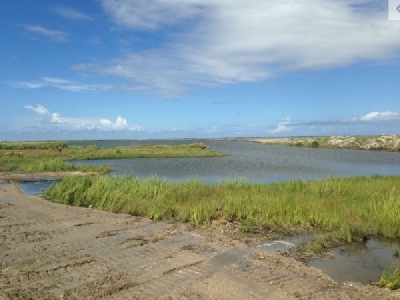
Posted on September 15, 2016
By Amy Wold, The Advocate
With $100 million a year payments looming over the state to repay the federal government their share of the New Orleans levee system, the state is trying to sell the idea that the billions in restoration work south of the city should count towards that amount.
The state’s payments will need to start as soon as the project is deemed completed, which could be in 2018 or 2019, said Johnny Bradberry, Governor’s adviser for coastal activities and chairman of the Coastal Protection and Restoration Authority.
That’s when the state expects to start getting a greater share of offshore oil and gas money, to the tune of a maximum of $140 million per year. So far, that’s the only place identified where the $100 million a year payments can come from, leaving only a potential $40 million a year from that revenue source for coastal restoration projects, he said.
Instead of using the additional offshore oil and gas money, Bradberry says he would like to see the state given credit for coastal work south of New Orleans that would help protect that levee system.
“I’m not sure they’re going to buy it, but we’re talking all the way to the White House,” Bradberry said on his way out to see one of the projects currently underway at Shell Island.
Pumping sand on this barrier island off the coast of Plaquemines Parish has been completed and work on building the marsh area behind the dunes is expected to begin later this week.
Louisiana soon will be asking the rest of the nation for some love — about $3.5 billion worth.
“The work we’re doing on barrier island is the first line of defense,” Bradberry said. Since 2007, there has been $1 billion spent just on the barrier islands that line the coast, with a half billion of that in the works now, he said.
The $76 million worth of work on Shell Island, which over the years has split into a west and east lobe, should be completed by the end of this year. Previous work on the island has included several funding streams, including the berm to barrier island work BP paid for during the response to the 2010 Deepwater Horizon oil disaster.
The most recent work comes from Natural Resources Damage Assessment early restoration money as a result of the Deepwater Horizon oil spill and involves creating more than 600 acres of land on the two pieces of Shell Island.
In all, the contractor Great Lakes Dredge & Dock Company pumped the equivalent of 250 dump trucks per hour since the work began on the islands in mid-March, said Brian Puckett, project manager with the dredge company.
The beach and dune sand was pumped up to 18 miles from the Mississippi River while the marsh to be built behind the dunes, said state Coastal Protection and Restoration Authority project manager Chris Allen.
+2
While other marsh creation areas seed naturally in a short period of time, the islands will have vegetation planted to help speed up the process which can be slower in more saline environments, he explained.
“The quicker you can get the vegetation started, the better you can hold onto that soil,” Allen said.
The state is closing in on having completed restoration of all the barrier islands in Barataria Basin west of the Mississippi River with Shell Island by the end of the year, work on Chenier Ronquille currently going on and work nearing completion for the engineering of West Grand Terre barrier island.
That will set the stage for additional restoration work inside the Barataria Basin with marsh creation and other restoration work.
One of the big projects on the books will be the Mid-Barataria diversion that will take sediment and water from the Mississippi River into the marsh to the west. Bradberry said the state hopes to break ground on that project by 2020.
Source: The Advocate





